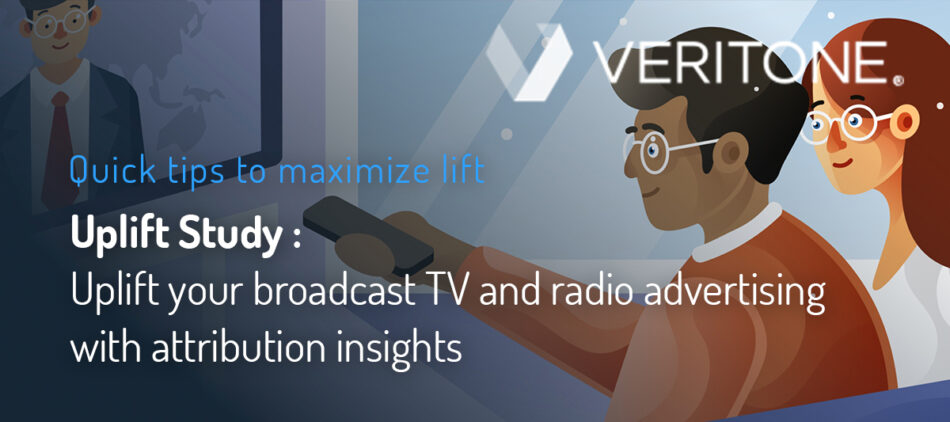
How Attribution with AI Can Uplift Broadcast TV and Radio Advertising
by Paul Cramer – Managing Director of Enterprise Radio Solutions
In the world of radio and television advertising, attribution has been difficult to demonstrate. While digital advertising has afforded more discrete measurement through device IDs and other unique identifiers, broadcast has been harder to track as an offline medium. Because of this, some advertisers may believe broadcast advertising is not as effective as online.
We developed the Veritone Uplift Study to demonstrate to stations and advertisers alike just how much broadcast advertising can drive lift, or the response you see on an advertiser’s website as a result of an ad campaign. Our findings showed just how much this response can vary, which factors drive the most lift and, most importantly, how lift from broadcast advertising can be accurately tracked.
About the study
To craft a timely yet thorough study, we evaluated 250 qualified and completed campaigns at the local-advertiser level over the course of 15 months and measured the lift associated with each of them. We accomplished this by leveraging Alteryx with Veritone’s aiWARE to enable the use of Intelligent Process Automation (IPA) and build the analytical model into a simple yet powerful workflow to complete the analysis.
What we found
Broadcasters, rest easy — the average campaign lift across the study was 6.6%, with the most successful campaigns seeing a lift of more than 50%. What was interesting about the campaigns we studied was that their success largely depends on factors that are controllable. These included copy elements, daypart placement and spot length, to name a few.
Even more interesting was the emotional component to advertising the study uncovered. People trust their favorite radio DJs, for instance, and campaigns in which the host read the advertisement live or mentioned the product organically gave more than double the lift of prerecorded spots.
How the study affects advertisers
It’s evident from the statistics listed above that broadcast ads are still highly effective. Because of this, advertisers should continue to allocate dollars to broadcast and even increase their spend in order to reach even more customers, as TV and radio haven’t waned in popularity or effectiveness.
So, how do advertisers make their broadcast ads even more effective? One way is by making consumers an offer they can’t refuse. A strong message with a rich offer, compelling CTA establishing urgency and a short URL gives the most uplift. For instance, “Win double your paycheck!” When it comes from a trusted voice, such as your favorite drivetime DJ, listeners can’t resist.
How the study affects broadcasters
The act of advertising is a joint venture between stations and clients, and for TV and radio stations, being flexible is key. For example, opening the show clock to more live reads and organic mentions can dramatically increase your value proposition to potential advertisers.
We were also able to determine which spot length works best, when they should be aired and what ad categories performed the strongest. However, even with the most well-made, impeccably timed campaigns, you need to show measurable attribution in order to prove the campaign has been a success. This is where AI and attribution tools come in. By investing in an attribution tool such as Veritone Attribute, you can easily provide real broadcast data analysis and deliver actionable insights and maximum value to your advertisers.
How do I learn more?
Download the Veritone Uplift Study to discover the best way to line up these key elements to deliver superior ROI to your advertisers.